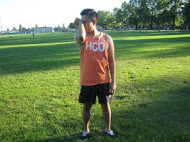Facial fractures are described as breaks in any of the bones that form the face. These include the lower jaw or mandible, maxilla that comprises the upper jaw, nose and the cheeks or zygomatic bones.
Symptoms of facial fractures
The symptoms tend to vary depending on the severity and location, but typically include abrupt pain, bruising and swelling. In most cases, cuts are present especially when the injury was instigated by a sharp object. One side of the face might appear deformed if compared to the other side. There might be bleeding from the eyes or nose and a straw-colored or pale fluid discharge from the ears, eyes or nose.
Facial fractures can occur due to direct impact. This typically occurs in sports such as cricket or hockey where a hard ball will strike the face and in rugby where the elbow or knee will hit the face. In addition, it can also occur during vehicular accidents.

Maxillary fractures
When it comes to a maxillary fracture, it is basically a break in the upper jaw bone including the nose. These fractures can be accompanied by airway obstruction, disturbances in the eye socket and swelling of the soft palate.
The primary treatment is focused on protecting the airways by instructing the individual to lean forwards. You can learn more about first aid care by enrolling in a class on first aid today. Once initial care has been provided, it is best to seek medical attention for proper assessment which involves an X-ray and other tests. The treatment includes surgery that involves the use of screws, wires or a plate to fix the bones.
Zygomatic arch and orbital fractures
The zygomatic bones form the cheekbones and inferior part of the eye socket. This type of fracture typically occurs after the cheekbone was hit by a fist or ball. The complications affect the eye such as altered vision, sunken eye or diminished sensation around the eye. The treatment might involve surgery to reduce the displaced bones and surgically fix any unstable fractures.
Mandible fractures
Mandibular fractures involve the lower jaw bone and the most common form of facial fracture. This injury can be caused by a direct blow such as being punched in the face or hit by a ball. Remember that the fractures occur in more than just a single area and may or may not be displaced.
The displaced fractures are considered serious and often involve the teeth. As for cases that does not involve displacement, they are considered as minor injuries that do not need any treatment other than rest and pain management.
The immediate care is the maintenance of the airways by keeping the individual in a forward sitting position. The jaw must be supported by the hand of the individual or with a bandage or cervical collar. Most cases of displaced mandible fractures require surgical reduction and fixation in order to restore the normal position and allow the bone to heal which takes 4-6 weeks.
